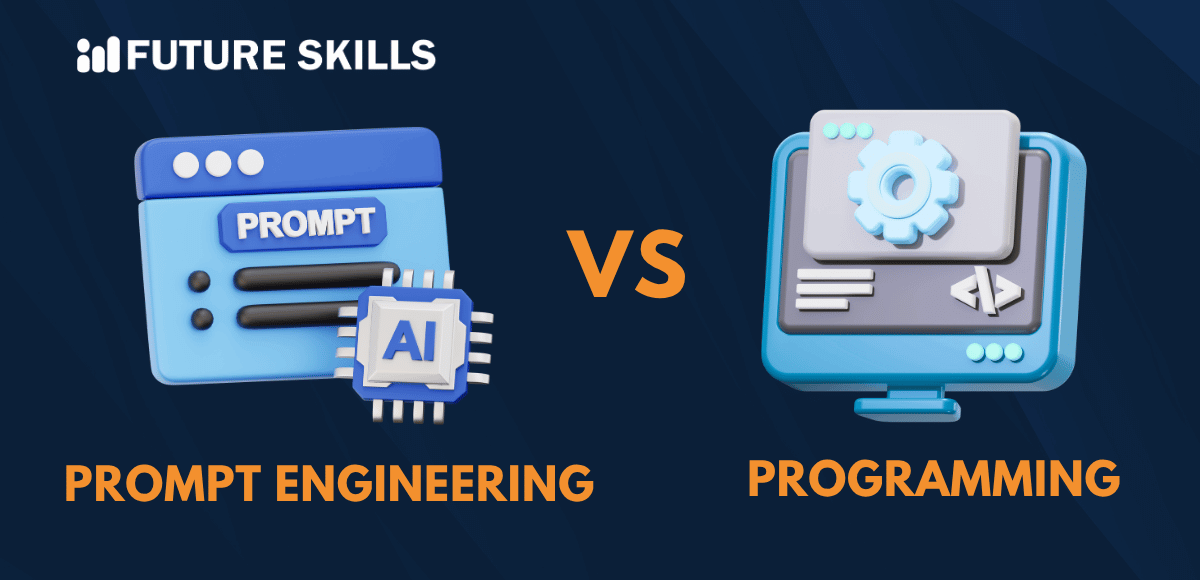Least to Most prompting refers to the prompting approach which fragments a complicated problem into a number of simpler sub-problems. After the fragmentation is done, the sub-problems are solved in a sequential manner. In the domain of natural language reasoning, the prompting enables language models to work on complex problems.
The least to most prompting basically involves two stages. The first stage involves the decomposition of the question or problem. Hence the questions are broken down into smaller and simpler questions. The second stage involves the sequential solving of the simpler questions. The least to most prompting is capable of generalizing challenging and complex questions into their simpler versions. The prompting can give a major boost to the reasoning capability of natural language models. Let us further explore the concept of Least to Most Prompting in the least to most prompting guide.
Relevance of Least to Most Prompting in LLM reasoning
In the natural language reasoning arena, the chain of thought (CoT) acts as a powerful technique. It basically allows language models to work on complex kinds of reasoning tasks and operations. Moreover, in a short span of time, it has shown remarkable progress to facilitate a broad range of reasoning tasks by language models. However, at times CoT may struggle to solve certain kinds of complex reasoning tasks. It is when the concept of least to most prompting comes into the picture.
In order to address challenging reasoning problems, Least to Most prompting has come into existence. It is a novel method that influences how language models work on reasoning problems. If you are keen to have a career in Artificial Intelligence or Machine Learning, you must familiarize yourself with the least to most prompting hierarchy. The insight on the prompting technique can help you boost the reasoning capabilities while working on diverse language models.
Features of Least to Most Prompting
Now that you know what is least to most prompting? It is time to dive deeper into the subject. You must familiarize yourself with the main features of least to most prompting so that you can understand its true potential. The least to most prompting guide gives an insight into some of the most critical features of the prompt.
- The decomposition stage of least to most prompting consists of a number of examples that are useful for demonstrating decomposition. These examples are followed by the specific question that has to be broken down.
- In the sub-problem-solving stage, the prompt has three distinctive parts. They are constant examples, a possible empty list of formerly addressed sub-questions and answers, and the question that has to be answered. A key thing to keep in mind is that there exists an interlink between every sub-problem and the answer to the previous sub-problem.
- In the case of the prompting approach, it is essential to understand the least to most prompting hierarchy so that sub-problems at all levels can be solved.
By using the least to most prompting approach, you can utilize a progressive series of prompts in order to achieve the final outcome. However, you must bear in mind that awareness about the least to most prompting hierarchy is essential while adopting the approach. The least to most prompting guide can definitely help you have a solid grasp of the prompting technique.
An Insight into Most to Least Prompting
While learning about least to most prompting, it is equally important to have knowledge of most to least prompting. The core of both approaches is that some kind of guidance is available to solve a reasoning problem. One of the key features of most to least prompting procedure is that the degree of prompt gradually declines while a language model is solving a problem. The prompting technique has taken inspiration from real-life most to least prompting aba strategies for children.
In order to understand the most to least prompting approach you can think of it as going down the ladder. The main aim of this prompting technique is to promote the independence of language models. Just like most to least prompting aba, when the prompt engineering approach begins, maximum support is available for language models.
However, as the natural language model becomes more proficient, there is a decline in the prompts. The most to least prompting procedure is apt for working on new and complex reasoning problems. If you wish to have a better grasp of the prompt you need to remember that it is based on the educational strategy involving most to least prompting aba.
Become a certified AI professional and boost your career by harnessing the full potential of AI with our Certified AI Professional (CAIP)™ course.
High Importance of Least to Most Prompting
Although there exists a plethora of prompting techniques, the least to most prompting approach has gained massive popularity. One of the main reasons for its popularity is its simple nature. It only involves two stages which enables natural language models to work on challenging problems in a simple manner.
When a problem is looked at an integrated level it may seem to be very daunting. However, if the same problem is broken down into smaller and more manageable sub-problems it may seem much simpler. The same approach is adopted in the prompting approach which allows language models to work on problems or questions effectively.
A key advantage of least to most prompting is that you can use the prompting technique along with other prompts such as chain of thought and self-consistency. Although it is not compulsory to combine these prompting approaches, you can do so if such a need arises. It may help to work on questions that involve a high degree of complexity. Now that you have an insight into the most to least prompting procedure as well as least to most prompting procedure, you can choose the approach depending on what suits your needs.
Future of Least to Most Prompting
The future of the least to most prompting approach is full of promise and potential. In spite of the fact that there exists a broad range of prompting approaches in the prompt engineering context, the least to most prompting has captured the attention of one and all. The least to most prompting guide has given a thorough insight into how the approach helps in solving problems. In current times when the complexity of problems is increasing, the relevance of the prompting approach is immense. In fact, in the future, the relevance as well as the application of least to most prompting may magnify further.
If you are passionate about language models and prompt engineering, it is a must to have a solid understanding of least to most prompting. The insight can be of immense help to you. This is because you can make use of the prompting technique in a real-life setting and ensure that natural language models are capable of solving complex problems in a simple way. However, before applying the approach, you first need to revisit – what is least to most prompting? It can help to solidify your comprehension of the prompting technique.
Familiarize yourself with all the concepts and best practices of ChatGPT with our accredited Certified ChatGPT Professional (CCGP)™ Certification. Enroll now to master your ChatGPT skills!
Developments in Prompt Engineering and LLM Reasoning Capabilities
The prompt engineering landscape has been undergoing rapid change and evolution in the past few years. A broad range of prompting techniques and approaches have come into existence today. These techniques are of high importance in the natural language model domain. This is because they can influence how language models work on different types of reasoning problems. The guide focuses on one of the most important prompting approaches that exists today which is the least to most prompting approach.
The emergence of least to most prompting has been an amazing achievement in the prompt engineering area. The least to most prompting approach basically breaks down a complex problem into simpler and smaller sub-problems. After the decomposition of the complex problems, the prompting technique focuses on solving them in a sequential manner. The decomposition is a key step which reduces the degree of complexity. This technique is of high relevance as it boosts the reasoning ability of language models. It basically allows these models to solve challenging and complex questions by breaking them down into smaller sub-questions.
Final Words
The least to most prompting guide has shed light on the concept of Least to Most Prompting. Having a solid knowledge of the reasoning approach is essential to learn about the reasoning capabilities of language models. The key features of Least to Most Prompting enable the prompting to strengthen how language models work on complex problems. The manner in which the prompting technique works shows that it has high potential in the realm of language models. You must further learn about least to most prompting so that you can apply it in language models to improve their reasoning power.







